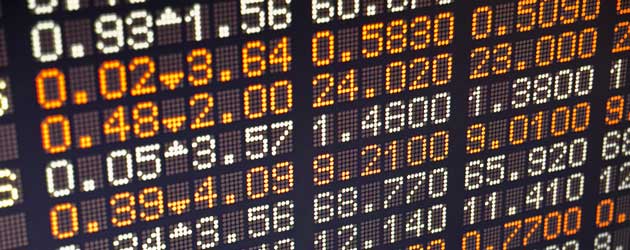Pound Sterling (GBP)
Anxieties over the Scottish bid for independence have caused investors to sell around £16.6 billion worth of British assets over the past month. However, the Pound ticked a little higher against the majors on Friday after fresh polling data suggested that the vote has swung in favour of the unionists. Investor caution has devalued the Pound significantly but there is the possibility that Sterling may gain strength over the course of the week if the unionist vote gathers momentum.
Sterling was slightly negatively affected by the potential for higher interest rates and volatility which has cooled demand for new house building; as evidenced in Friday’s British construction output which was seen to stagnate in July. Having registered a 1.2% increment in June the latest construction figures reflect the worries surrounding Bank of England interest rate revisions.
Euro (EUR)
The Pound to Euro exchange rate held relatively steady on Friday in anticipation of the coming week’s heavy economic calendar. With the Federal Reserve due to announce its latest stance on monetary policy, the Bank of England set to publish the minutes from its most recent meeting and the conclusion of the Scottish bid for independence drawing ever closer; there is the likelihood of heightened volatility in the currency market.
Friday’s data indicated that European industrial output increased by 1.0% in July; resulting in an annualised score of 2.2%. With industrial output exceeding expectations, the potential for Eurozone growth in the third quarter to better the second quarter’s flat line gross domestic product figure has heightened significantly. Germany’s contribution to the robust print was strong but it was a surprising 11.3% acceleration in Ireland that had the greatest influence.
US Dollar (USD)
With US retail sales printing in line with the market consensus on Friday the Pound to US Dollar exchange rate fluctuated throughout the day.
A combination of underlying strength in the ‘Buck’ (USD) and fears surrounding Scottish independence have seen Sterling around 10 cents weaker against the US Dollar that it was at this time a month ago. ‘Greenback’ (USD) demand has flourished of late with US data improving and heightened speculation of a sooner-than-expected Federal Reserve rate hike. However, a dovish outlook on monetary policy from the Fed could begin a reversal over the course of the week.
Support for the ‘Buck’ has centred on the idea that rates will rise in the near future but this optimism could swiftly change if the Fed appears to talk down the Dollar. The general expectation is that the central bank will opt to keep the rate unchanged at 0.25% and reduce its monthly asset purchasing target to $15 billion from $25 billion. If that is the case it is unlikely to have much impact on the currency market but the US Dollar’s nine-week long winning streak could end if policymakers don’t use the meeting to convey a hawkish message. Conversely, if the Fed releases an upbeat report it could send Sterling to fresh 10-month lows against the ‘Greenback’.
Canadian Dollar (CAD)
As North American investors opted to sell the Canadian Dollar ahead of the Federal Reserve’s announcement the Pound to ‘Loonie’ (CAD) exchange rate rallied by just under a cent. The Fed is also due to publish a set of forecast revisions to inflation, employment and interest rates which many investors have interpreted as a signal for the beginning of tighter monetary policy. Should the Federal Reserve strike a hawkish note; demand for the Canadian Dollar may dampen under the weight of higher interest rate prospects.
Australian Dollar (AUD)
The Pound to ‘Aussie’ exchange rate rallied by over a cent-and-a-half on Friday as risk aversion trends hurt the Australian Dollar amidst heightened speculation of higher borrowing costs in America. An unexpected cooling of China’s inflation in August also contributed to the ‘Aussie’ downfall.
New Zealand Dollar (NZD)
A reduction in risk appetite saw the Pound to New Zealand Dollar exchange rate gain around a cent on Friday. Having asserted that rates will not be raised for the foreseeable future; Reserve Bank of New Zealand Governor Graeme Wheeler has also contributed to softer ‘Kiwi’ (NZD) demand.
South African Rand (ZAR)
Cooling economic growth and falling infrastructure spending has led South Africa’s largest cement maker, PPC Ltd. to label the current domestic market as ‘particularly tough’.
Despite the detrimental effect of the Scottish bid for independence on trader anxieties; Sterling has rallied against the South African Rand after manufacturing and mining production in South Africa failed to grow in line with expectations.


